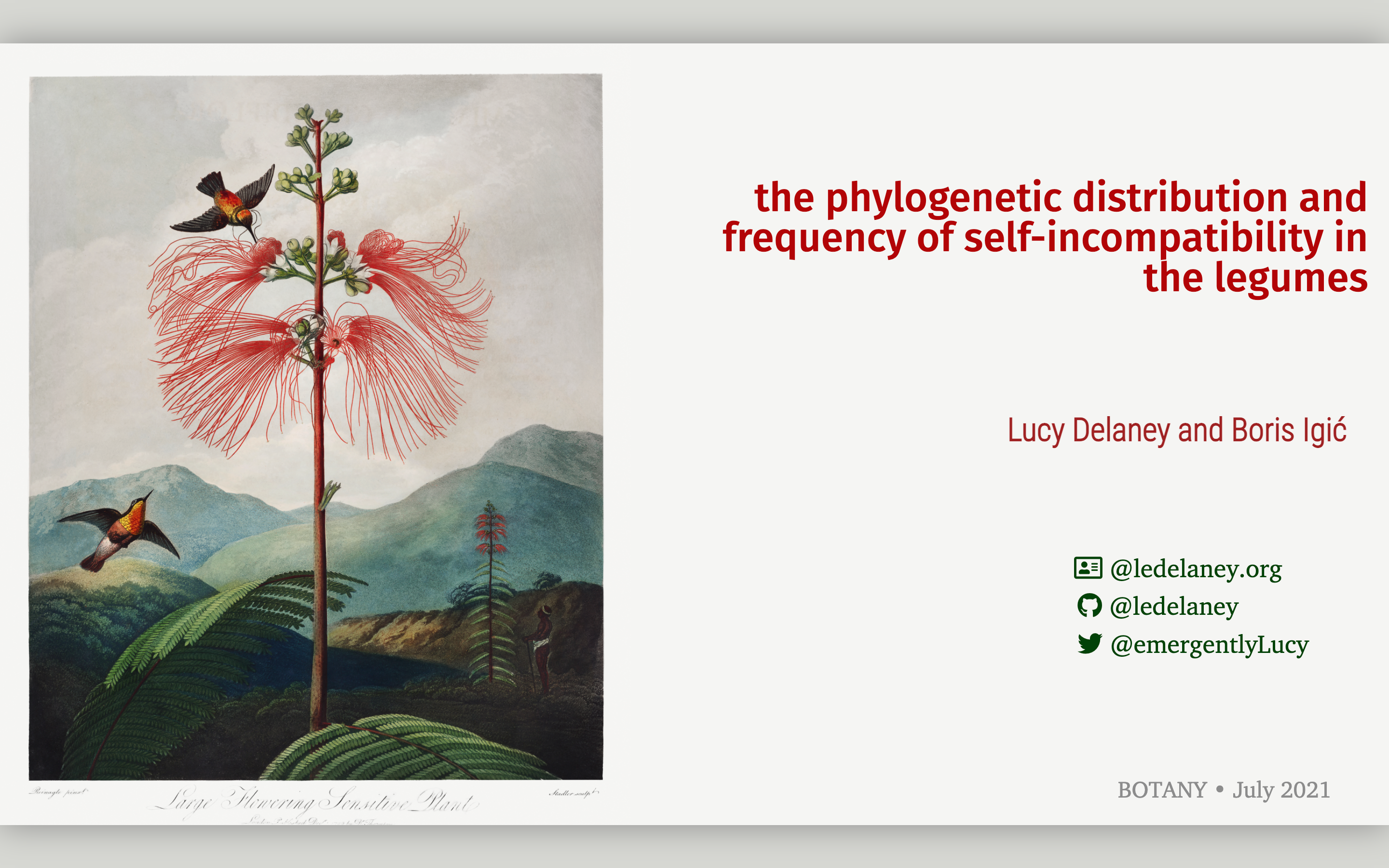Associated paper currently in review with the International Journal of Plant Sciences
Self-incompatibility (SI) -- a suite of genetic mechanisms that prevent self-fertilization -- is thought to have profound effects on the evolution of flowering plants. And yet, surprisingly little is known regarding the phylogenetic distribution and frequency of SI in some of the largest angiosperm families, including the legumes (Fabaceae). The ecological and economic significance of the family has motivated an enormous but scattered output of literature concerning their breeding systems and reproductive biology.
We compiled a database using literature from 367 published reports with a special emphasis on breeding systems and life history traits. Our collection includes 1320 entries containing data for 1167 unique species across 184 genera -- 5.4 percent of the family. We find slightly more than 26 percent of tested Fabaceae species are SI, and that SI is primarily concentrated among the oldest lineages in the subfamily Caesalpinioideae, and in some genera of the subfamily Papilionoidae, notably Trifolium. We find no evidence of correlation between breeding system and ploidy, but evidence of significant correlation between breeding system and perenniality. We use this data to evaluate long-standing questions about the mechanism(s) responsible for SI in Fabaceae.
Our collection reveals greater complexity of SI expression in the family than previously recognized. With our current data we find no evidence of RNase-based SI -- or any single SI system -- operating in Fabaceae. We highlight once more the important need for empirical work evaluating SI and outline where future efforts may be focused.
Slide set-up with the xaringan (built on remark.js)and metathis R packages. Actual slides and css coded by hand. See references.pdf for slide citations.
- Large–Flowering Sensitive Plant from The Temple of Flora (1807) by Robert John Thornton
- Blooming wisteria (1900 - 1930) by Ohara Koson
- St John's Bread (Ceratonia siliqua L.) (1907) by Deborah Griscom Passmore
- Tamarind (Tamarindus indica) illustration from Medical Botany (1836) by John Stephenson
- Bladder-senna (Colutea arborescens) from Traité des Arbres et Arbustes que l’on cultive en France en pleine terre (1801–1819) by Pierre-Joseph Redouté
- Japanese Tree-creeper and Pea illustration from Pictorial Monograph of Birds (1885) by Numata Kashu
- Mucuna pruriens (Dolichos pruriens) illustration from Medical Botany (1836) by John Stephenson and James Morss Churchill
- Sweet acacia (Mimosa farnesiana) from Traité des Arbres et Arbustes que l’on cultive en France en pleine terre (1801–1819) by Pierre-Joseph Redouté
- Butterfly Pea (Clitoria mariana) (1934) by Mary Vaux Walcott
- Locust on a leaf illustration from Churui Gafu (1910) by Morimoto Toko
- Arachis hypogaea
- Red clover, Trifolium pratense (1596–1610) by Anselmus Boëtius de Boodt
- Carob flower (Ceratonia siliqua) from Pomona Italiana (1817 - 1839) by Giorgio Gallesio
